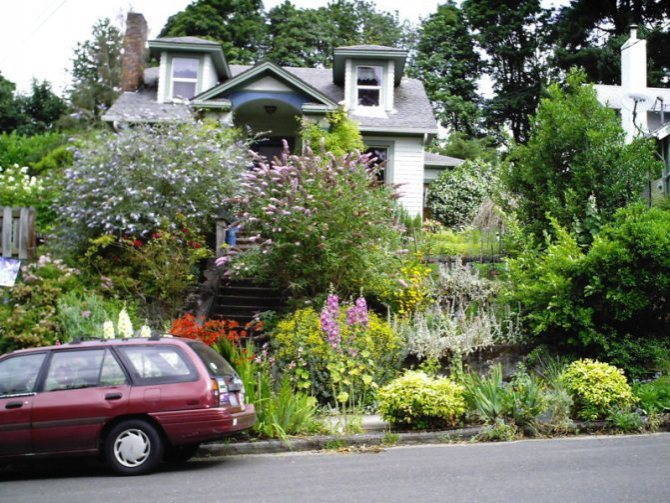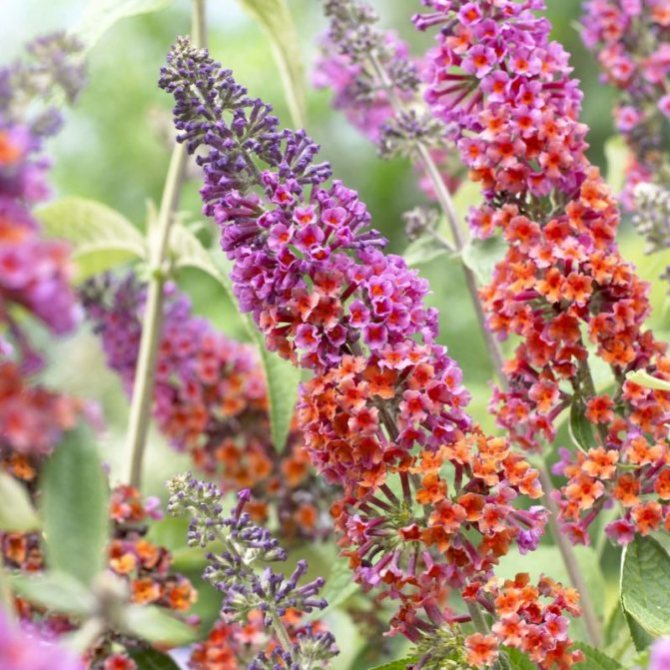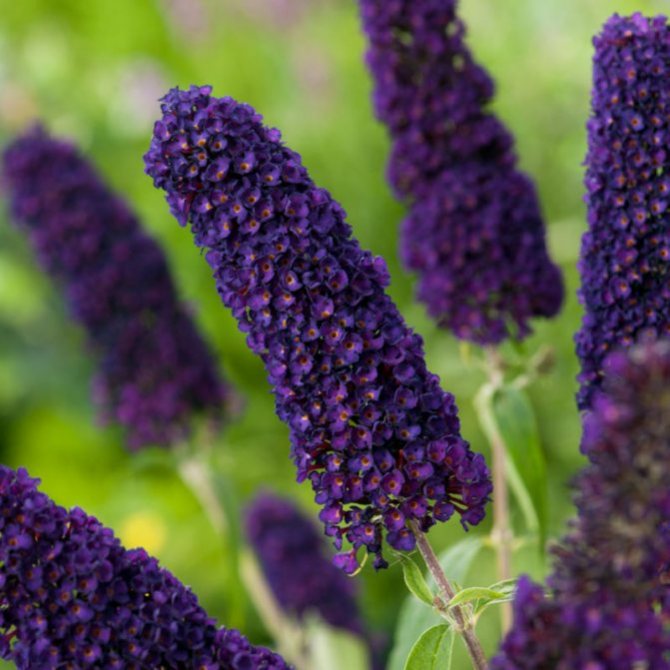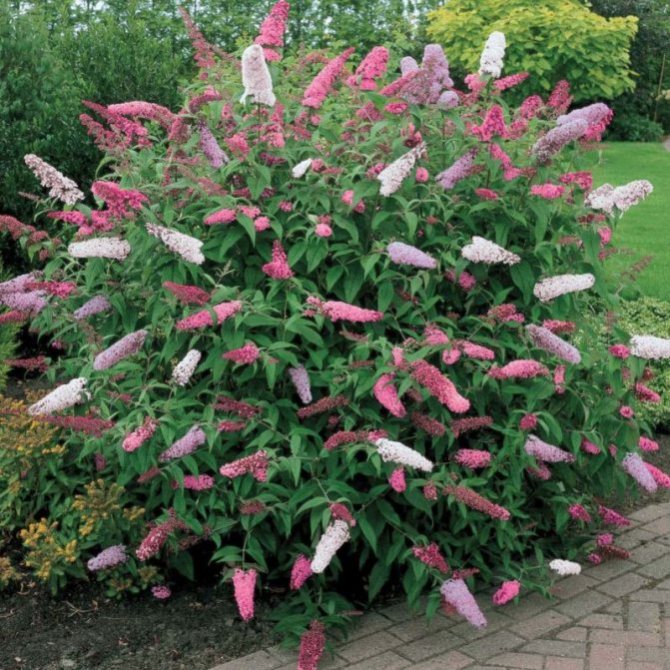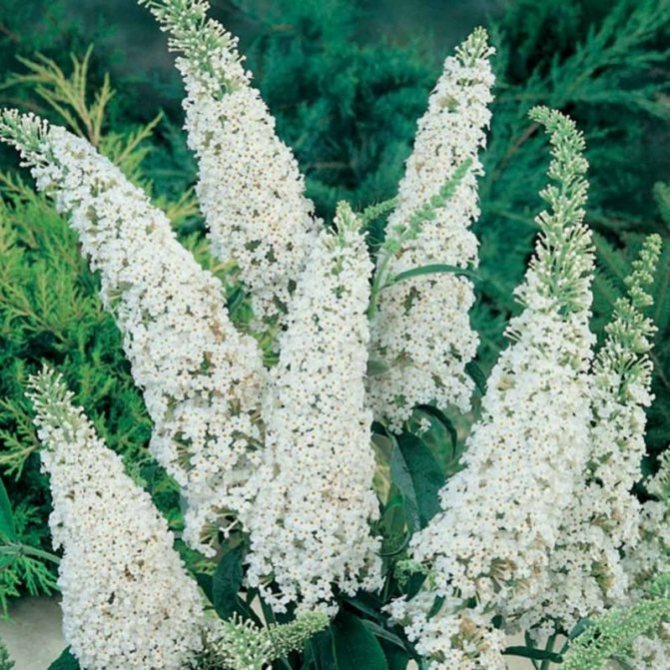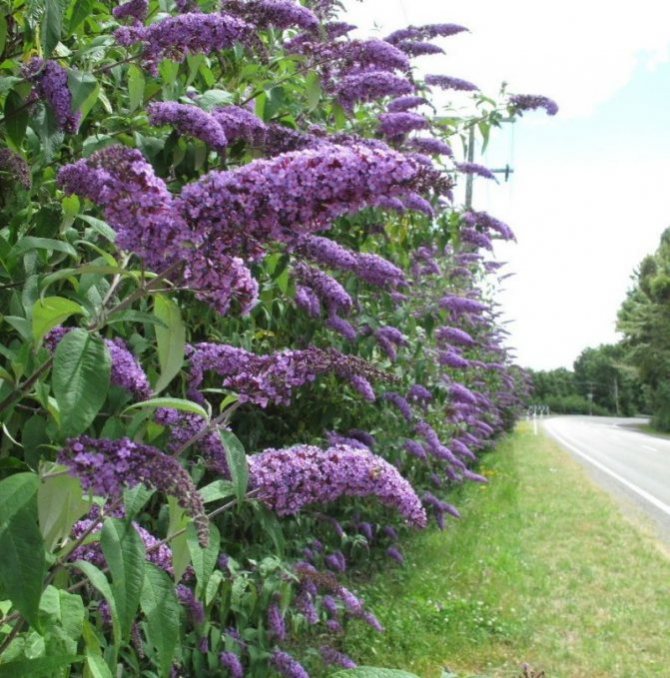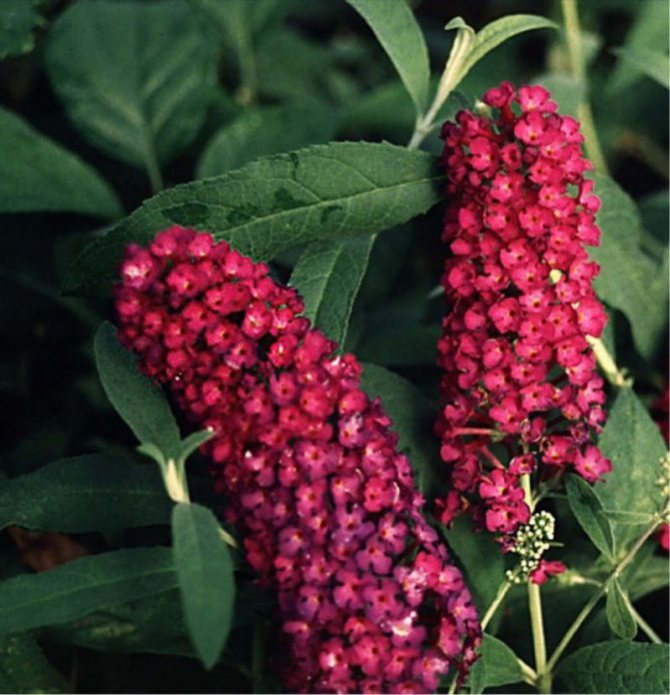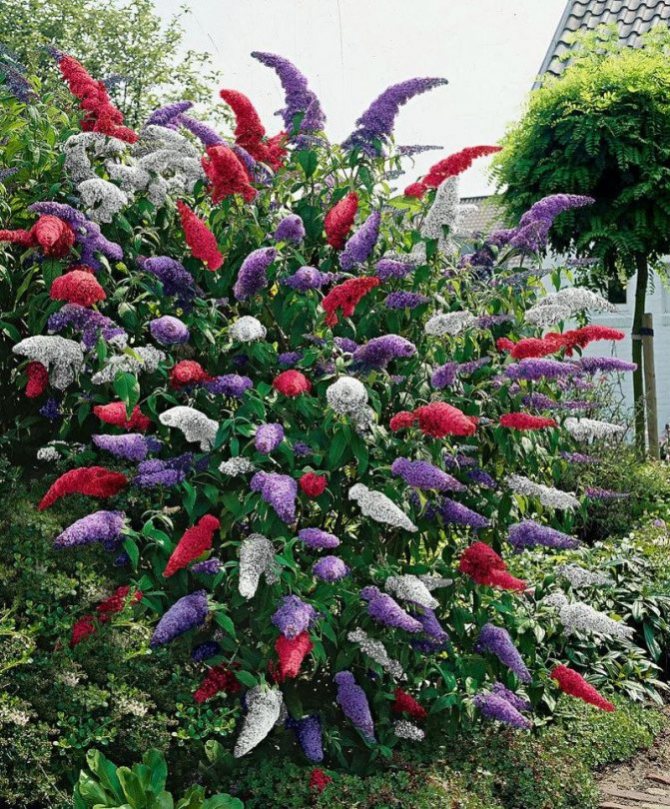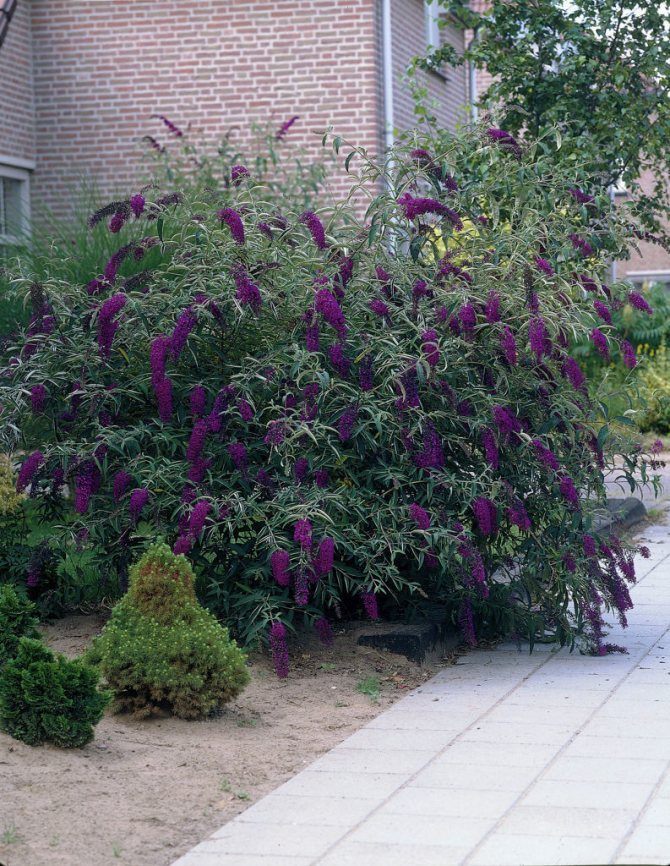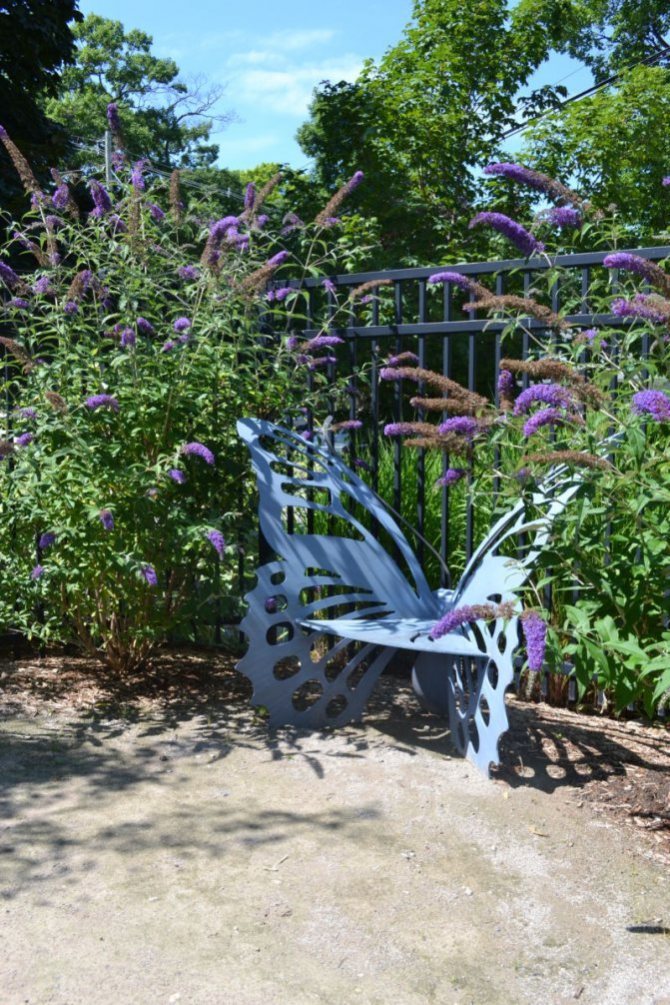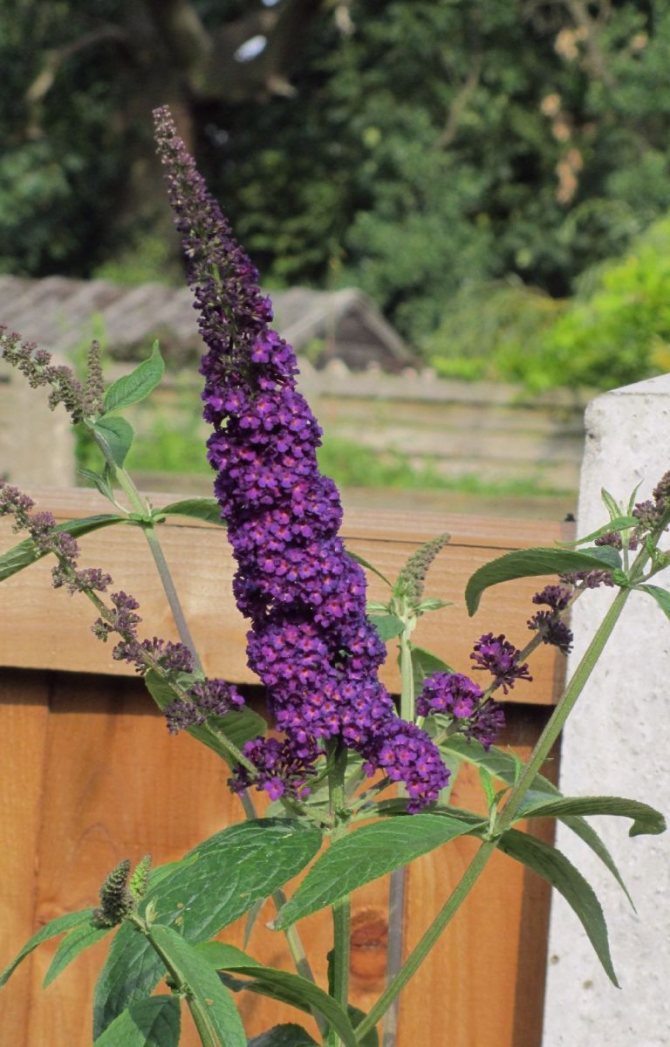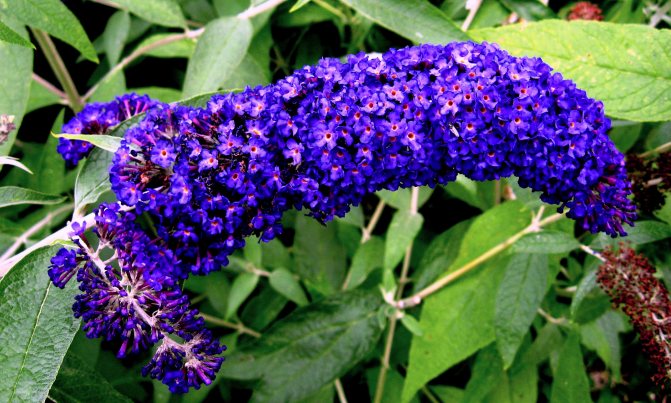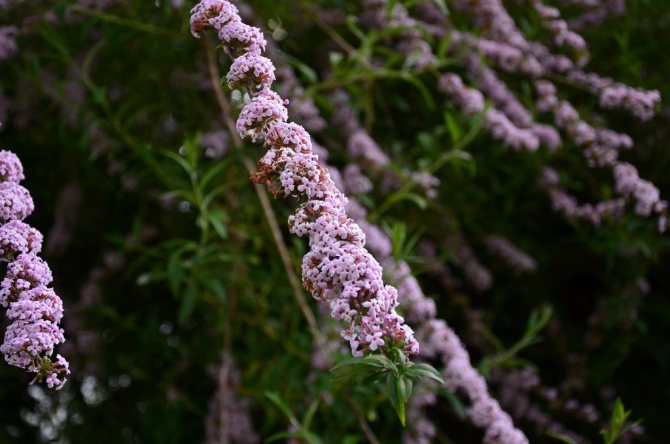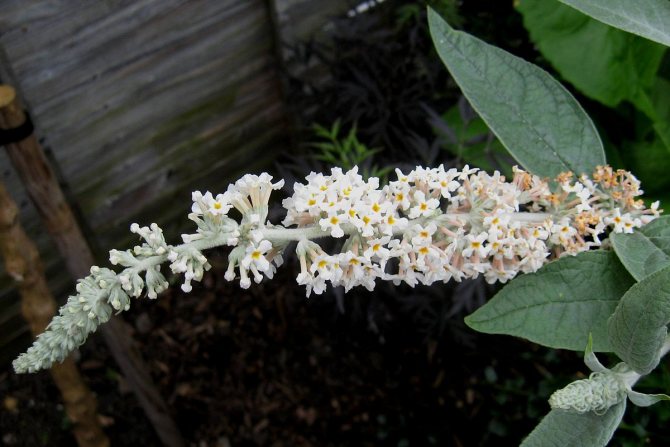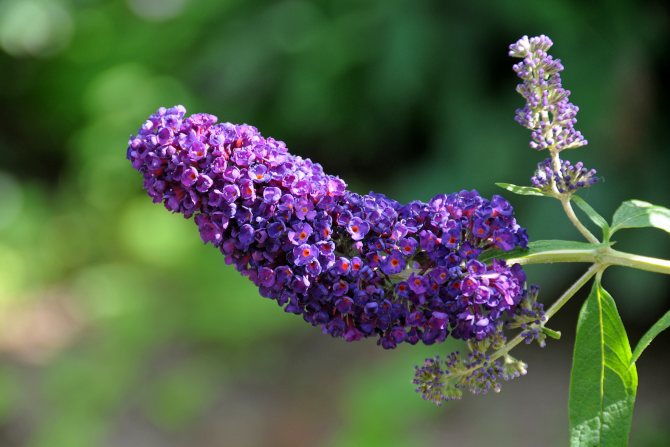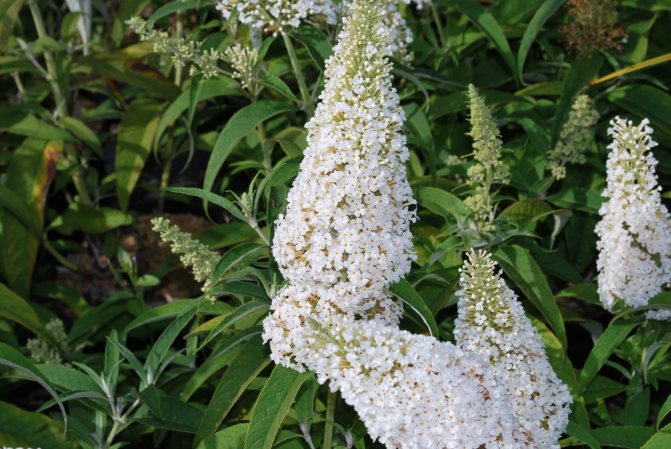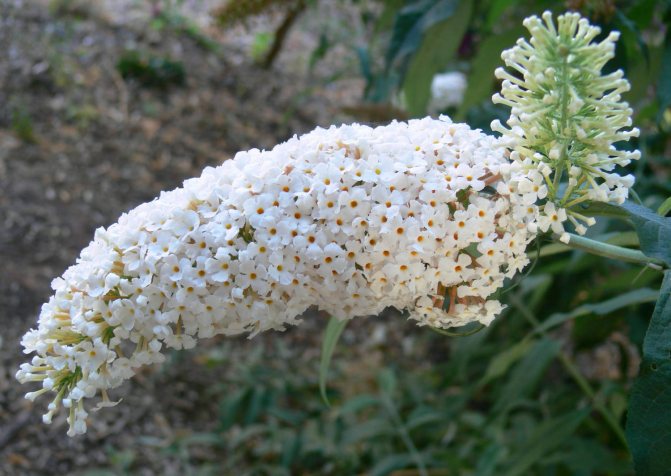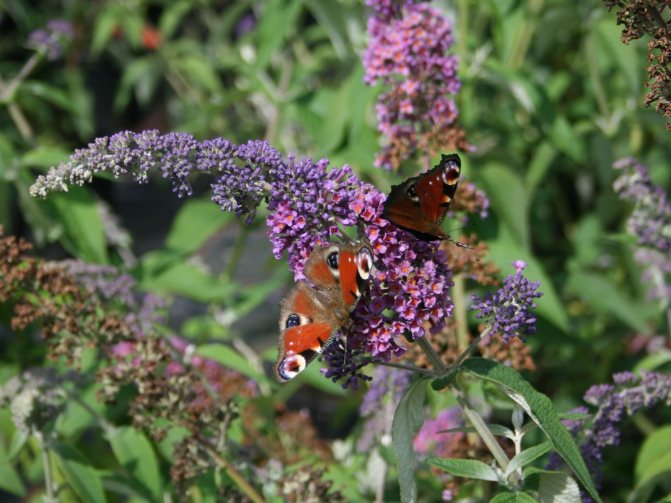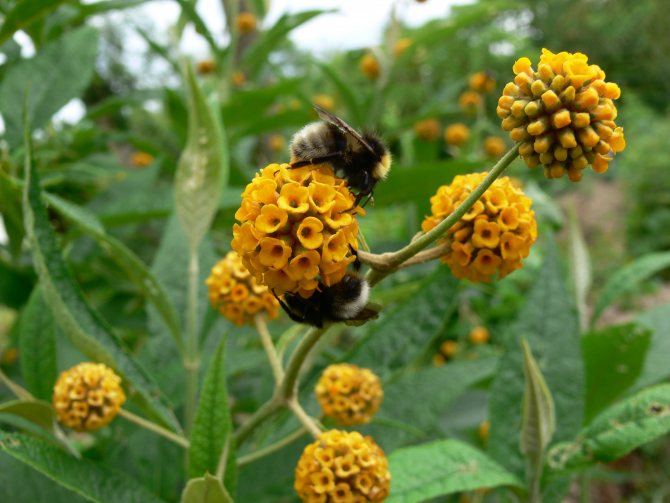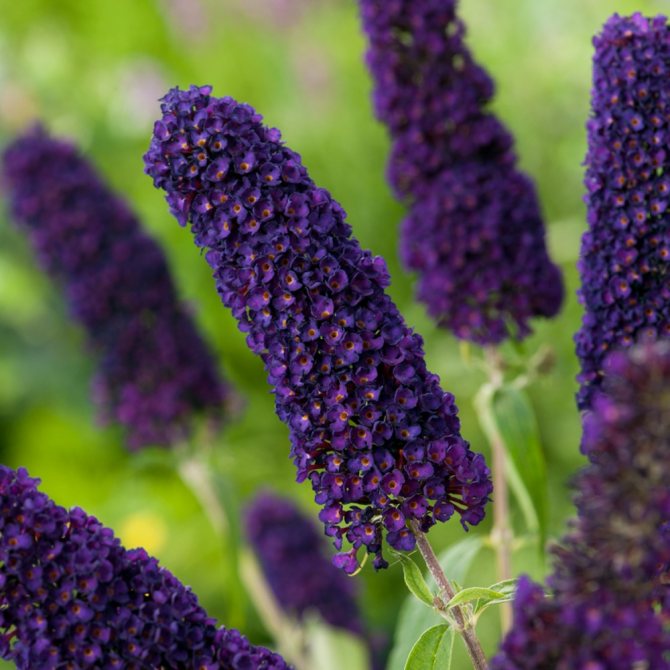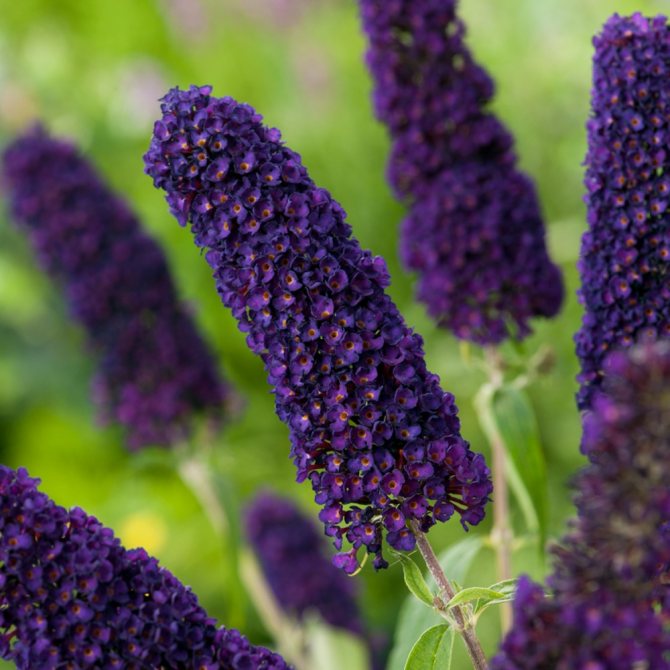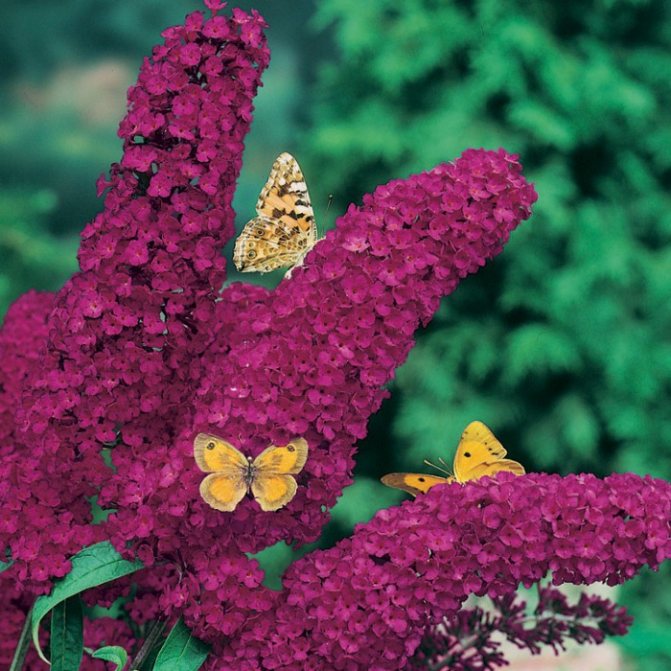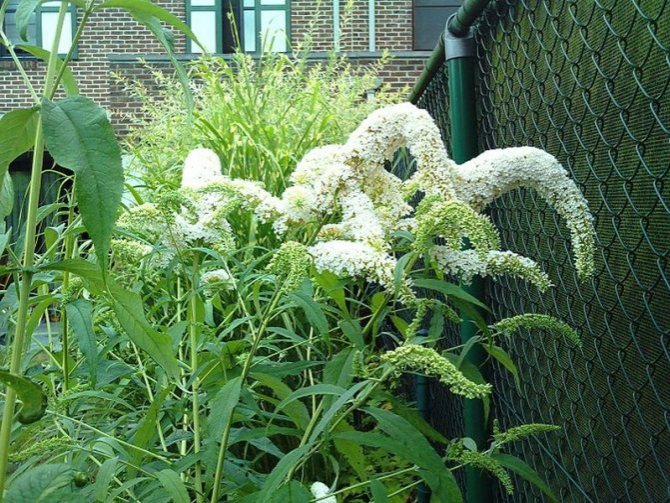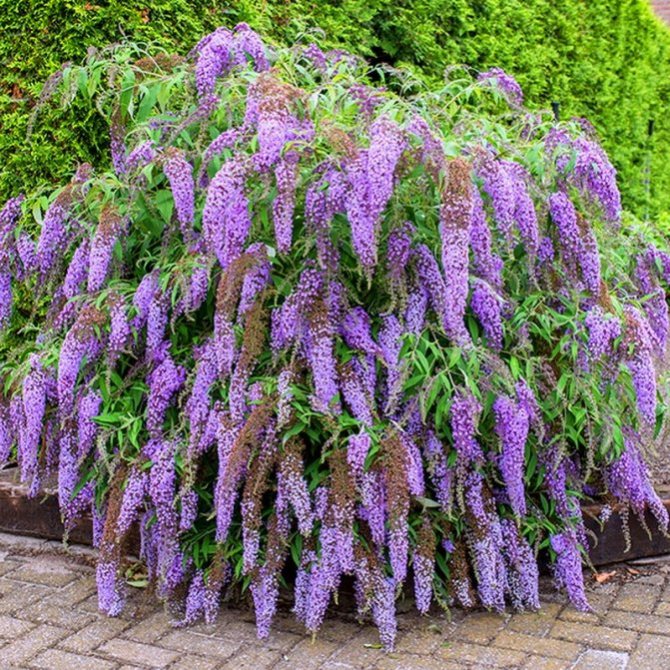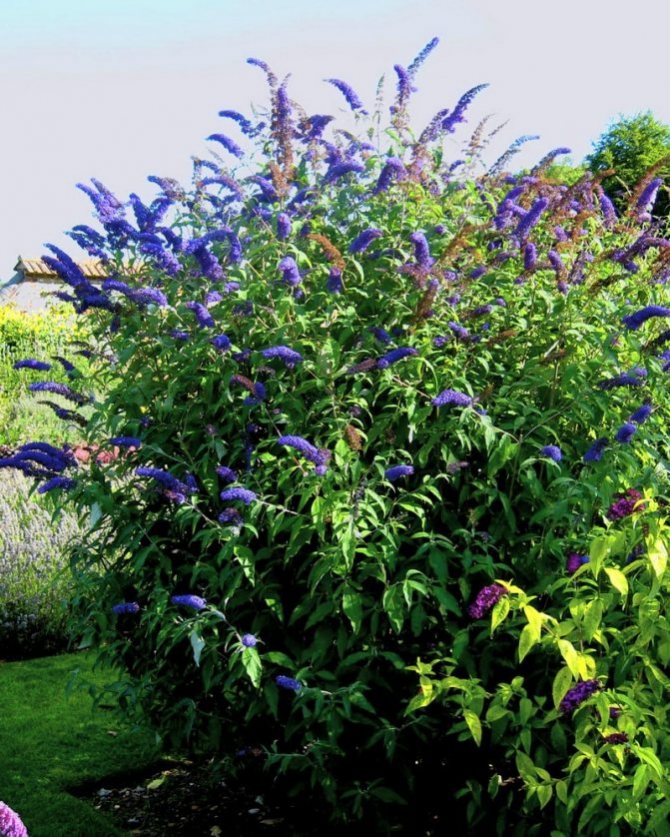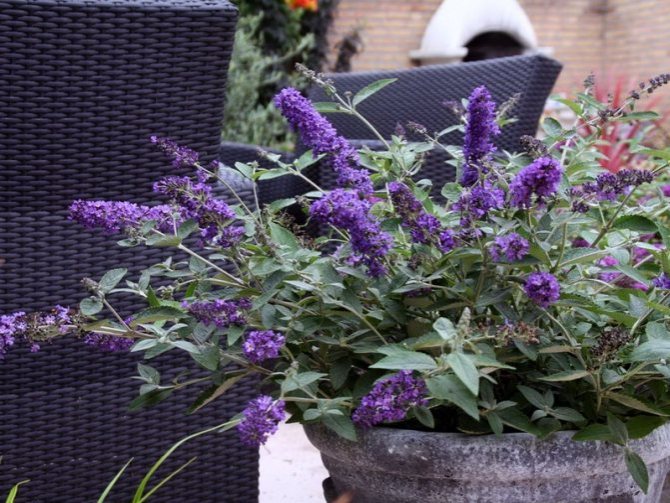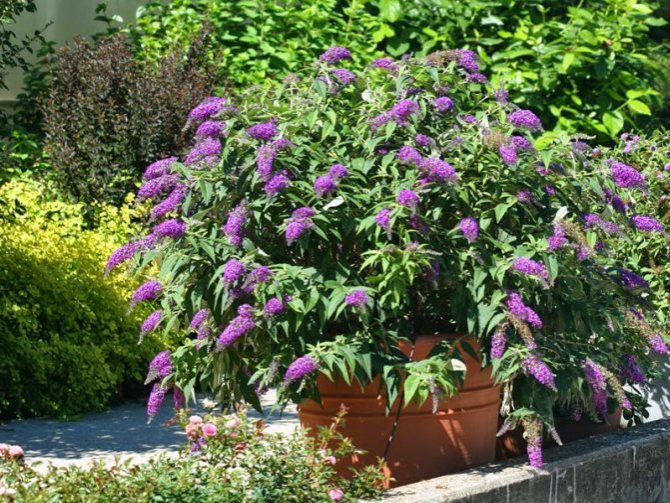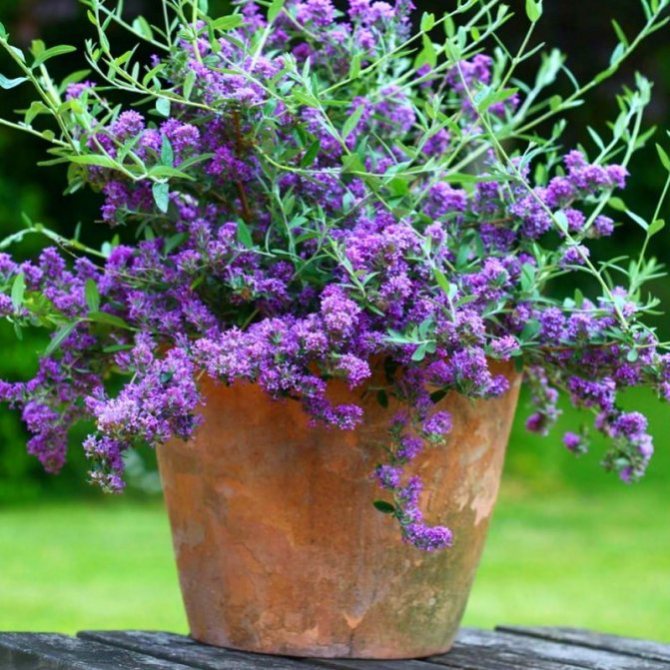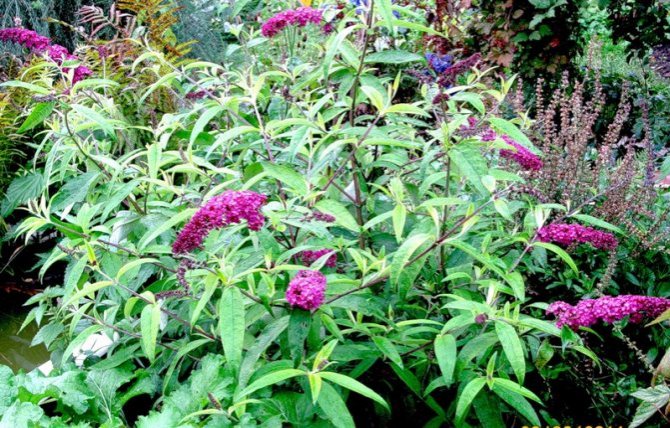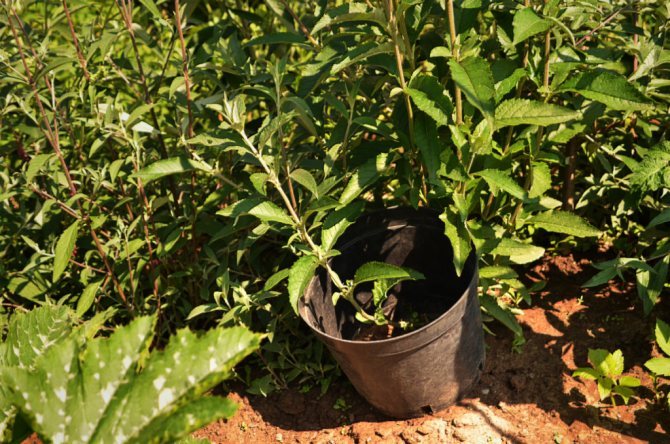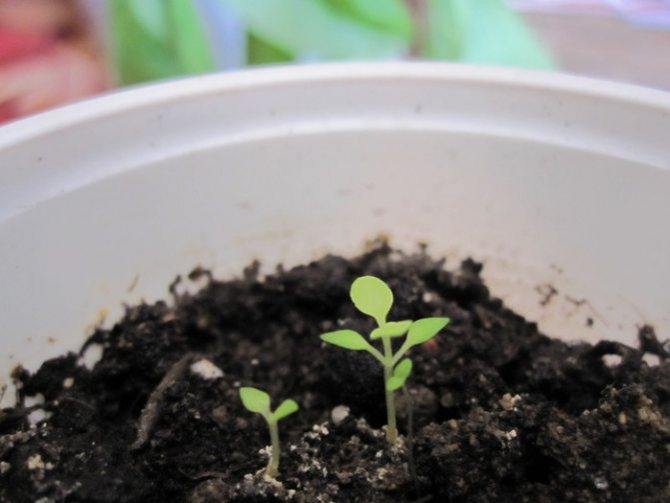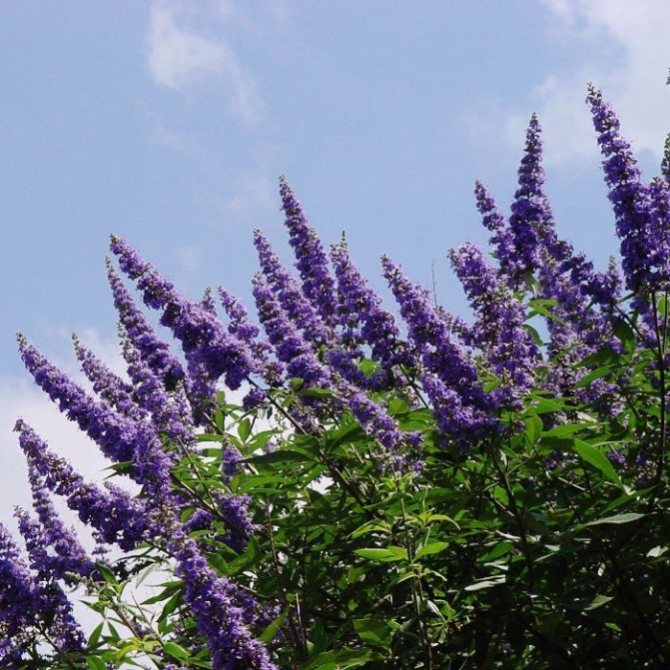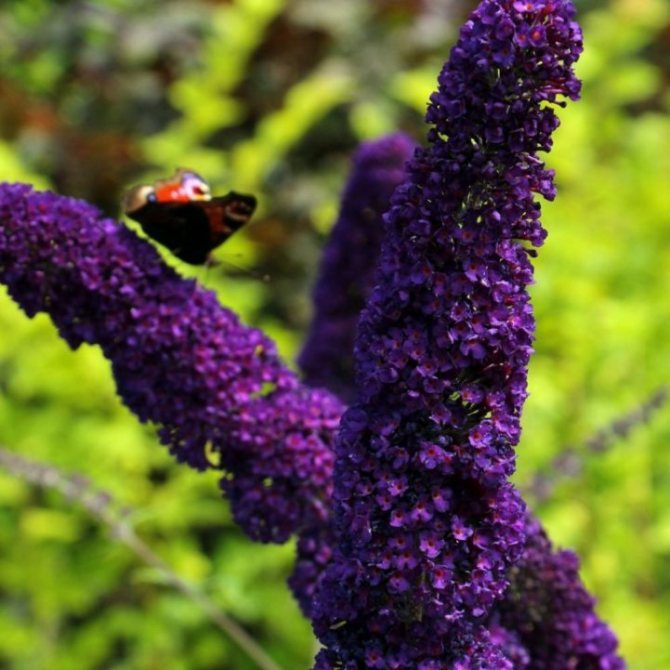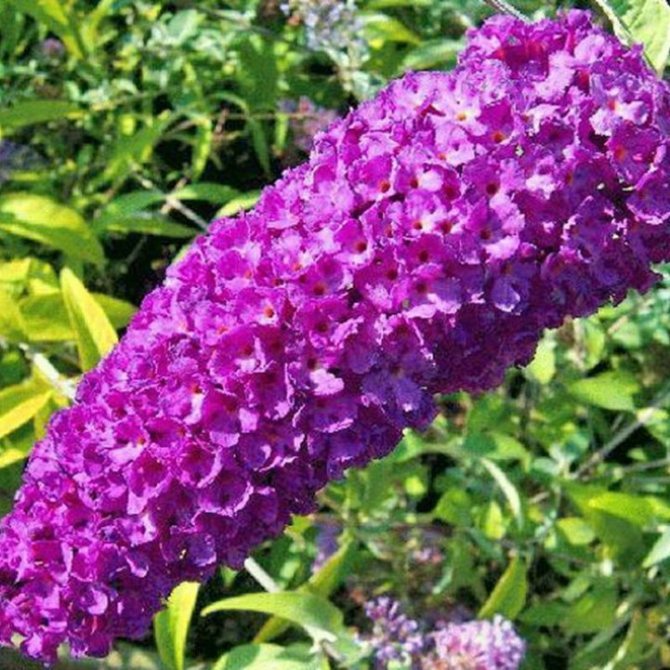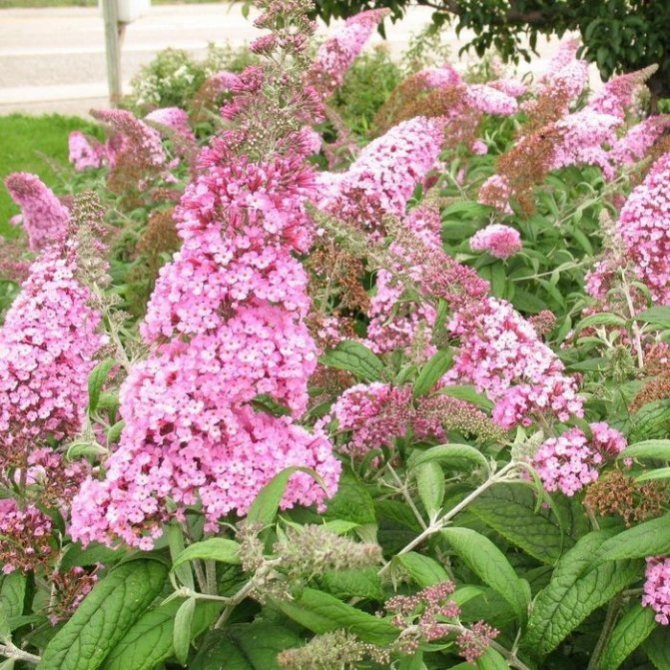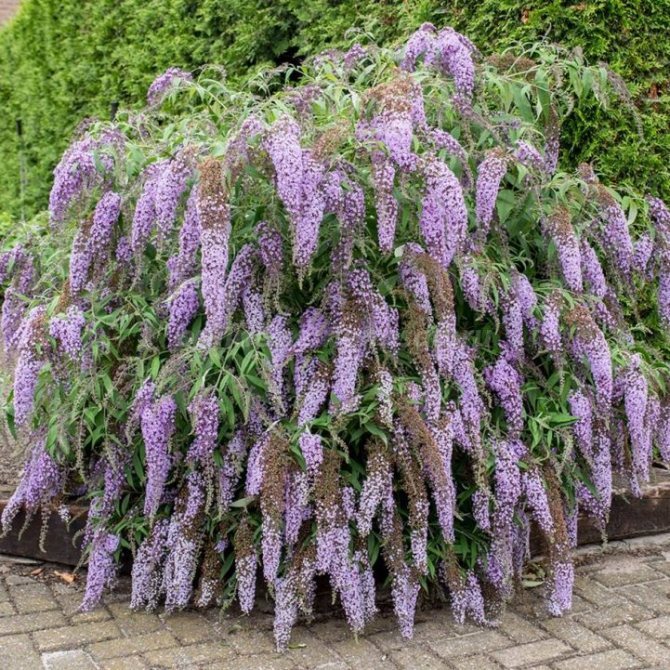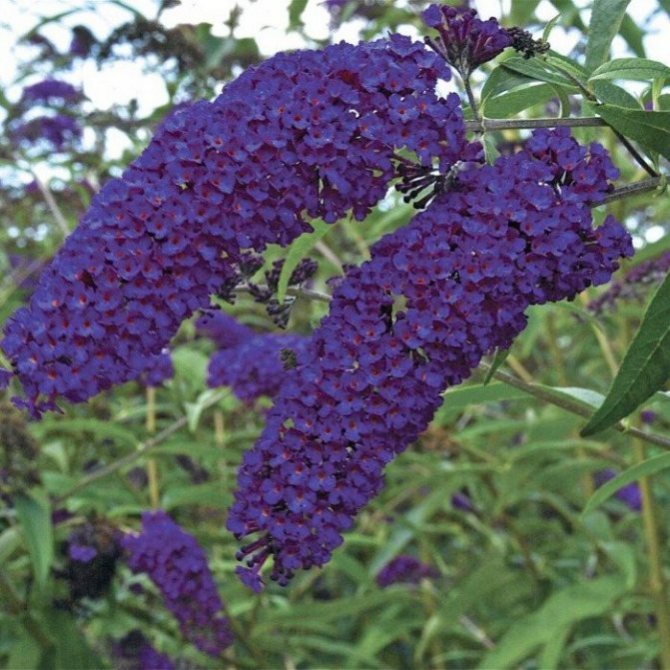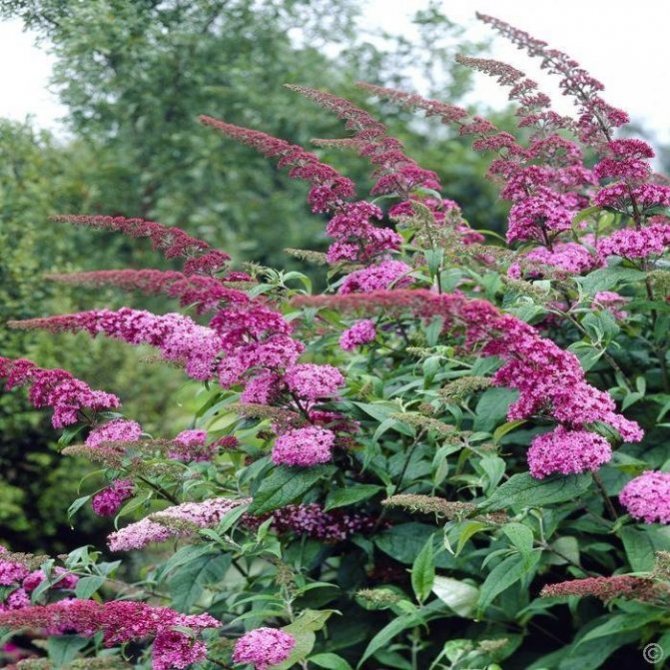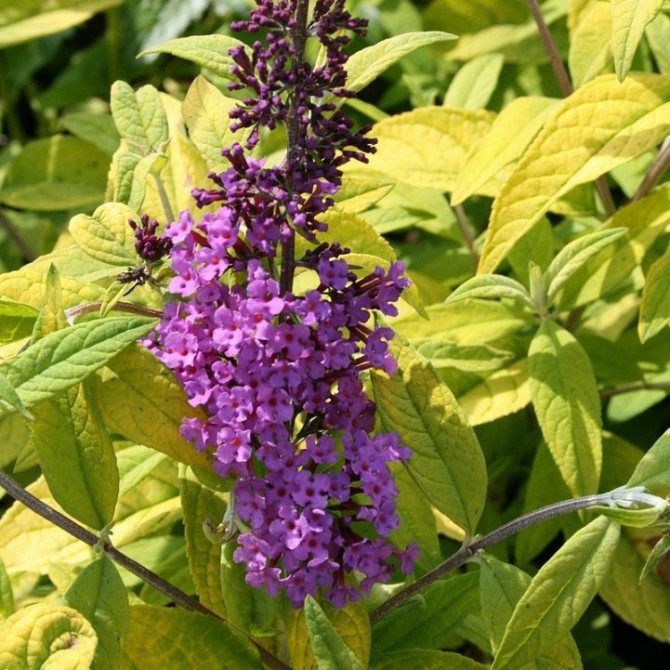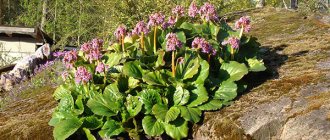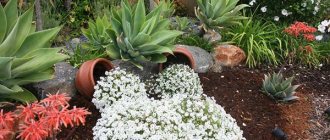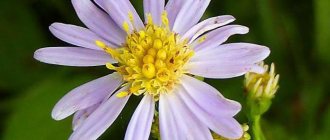Budleia is a decorative flower that looks like small shrubs, the flowering period is in July-October, the inflorescences resemble bunches in shape, densely covered with small flowers. Panicles can be of different shades, depending on the subspecies - cream, yellow, purple, orange and red.
- Seeds
Varieties of budley
There are different varieties of budley, which differ greatly not only in the size and shape of the bush, but in the variety of the color palette of the buds, as well as the flowering period.
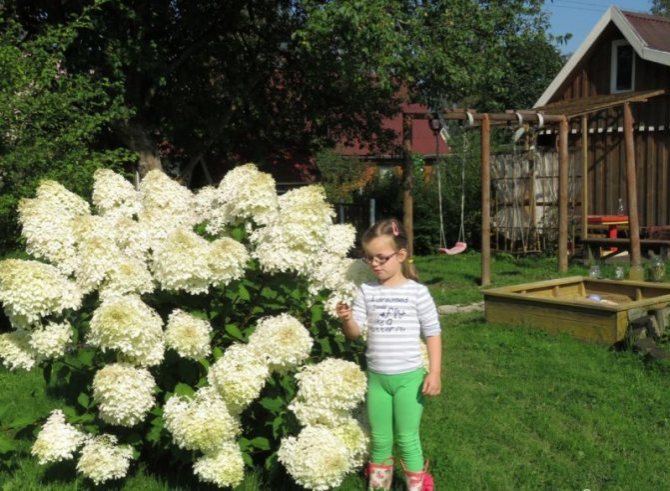
The most common variety of photo budley, which can be found in landscape design catalogs, is intended for a temperate climatic zone. This variety is of the following types:
Types and varieties of flowers
As already mentioned, there are more than a hundred different varieties and types of this plant. But below we will tell you about the most common in Russia.
Buddley of David
The classic plant variety is a voluminous bush up to 3 meters high. The ends of the branches have a drooping arrangement. The root system is superficial. In order for the flowering to be continuous, you need to remove the faded panicles.... This species blooms from three years old, the flower is able to grow up to 2 meters during the season. In autumn, it gives small seeds, multiplies by cuttings. For successful growth, the following conditions must be met:
- landing on the sunny side;
- calcareous soil;
- timely watering and irrigation;
- regular fertilization;
- insulation for the winter.
Black Knight and Nano Blue
This shrub grows to a maximum of 2 meters in height and has purple inflorescences. Planting in partial shade is possible, needs regular watering, winter care is possible without shelter. Well suited for group plantings.
A species such as Nano Blue has a funnel-shaped crown and will grow in height and width by 1.5 meters. The leaves are elongated, their reverse side is gray and velvety, the inflorescences have a violet-blue hue, the branches are bent downward under their weight. Needs sun and fertile soil.
Pink Delight
This shrub is very tall, erect and spike-shaped inflorescences, have a pink tint. The aroma is honeyed and thick. The crown after winter is replaced by new shoots and during the season it gives an increase of three meters. Loves light and drained calcareous soils. Can be grown with low shrubs and herbaceous perennials.
Royal Red and Flower Power (bi color)
This flower is distinguished by its red-purple inflorescences, which have a drooping arrangement. His the height is 3 meters, the plant also has a wide crown... It grows quickly and recovers well after winter. The optimal soil is calcareous and neutral, sufficiently drained. Also buddleya of this variety loves water and light.
There is a variety called Flower Power. There are also varieties of tri color flower, depending on the number of shades. In this case, there are two of them:
- purple;
- Orange.
This shrub is tall and spreading, it is distinguished by its warmth. Its inflorescences are fluffy and fragrant and can grow up to 40 cm in length. BUT on the reverse side, the leaves are drooping, yellow or white... Flowering begins from the second year of life. During the growing season, new shoots up to 2 meters long grow on the site of the frozen crowns. This species tolerates winter well.
Different varieties of Budleia: photo of flowers
Buddley in landscape design
Due to its decorative effect, Buddleya has gained wide popularity; these incredibly beautiful shrubs can be found even in the gardens of Siberia. The plant harmoniously fits into any composition due to the variety of shapes and colors of flowers.
Buddleya is good both in single and in group plantings, the plant is very practical in terms of decorating various outbuildings, and bushes are also planted to delimit the territory.
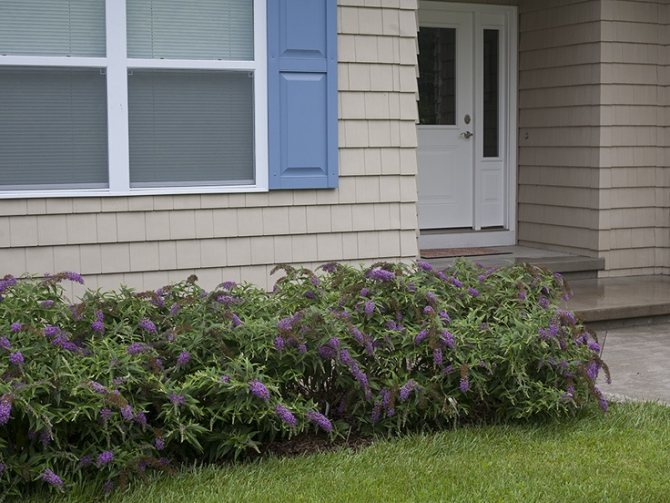

The ability to grow buddleys in containers significantly expands the scope of the shrub in decorating areas.
All these advantages completely cover the poor adaptability of the buddleya to harsh winters, just take care, and this charming southerner will surely thank you with lush and fragrant flowers at a time when nature begins to prepare for bed. So we safely recommend growing such an ornamental shrub as David's buddley, planting and caring for it in the open field is quite acceptable.
Shelter for the winter
Low winter hardiness is the main disadvantage of David's budley for growing in our latitudes. The branches of the bush begin to freeze out even with a slight frost. Therefore, proper preparation for winter is very important.
Before hiding in the garden, in late autumn, the budley is watered and the next day it is sprinkled with soil, after which the bush is bent to the ground and covered with an interlayer of dry leaves, peat, spruce branches. A wooden or metal is installed on top
carcass, which is covered with roofing material, slate, fiberglass - the covering material should not allow water to pass through.
The frame height should be 30-40 centimeters. This will make it possible to form a sufficient air gap so that the budlea does not freeze and does not melt. The farther north the shrub planting site, the higher the shelter should be and the more layers of covering material should be used. In this case, the budley in the garden will not die even in the most severe frosts. If individual branches are still damaged, they are pruned immediately after removing the covering material.
Landing
Propagated by budley seeds and cuttings. It is more difficult to grow a shrub from seeds, so the best way to plant a budley with cuttings.
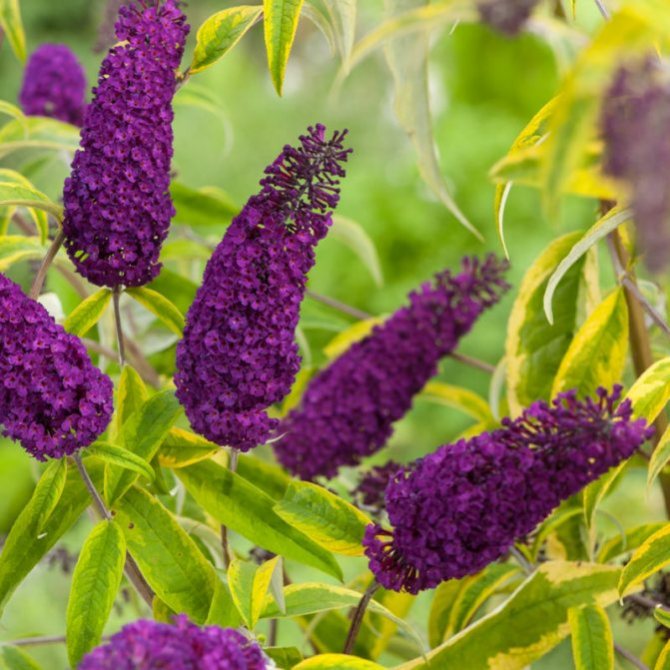

It is best to plant a shrub in an open and sunny area, preferably protected from the wind, because young shoots are very fragile.
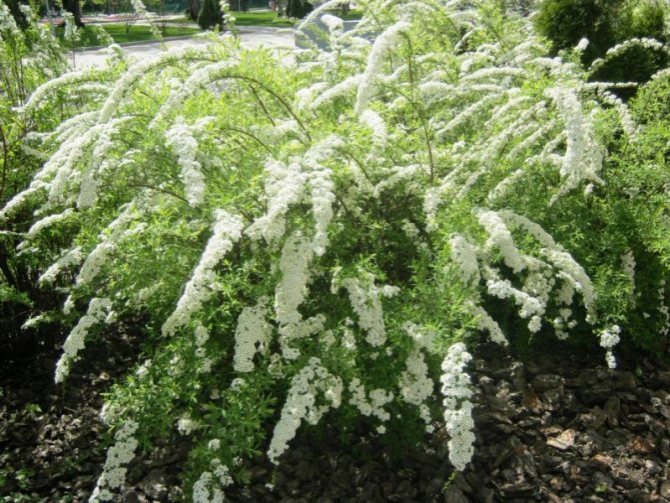

Before planting seedlings, you need to fertilize the soil with manure or special fertilizer.
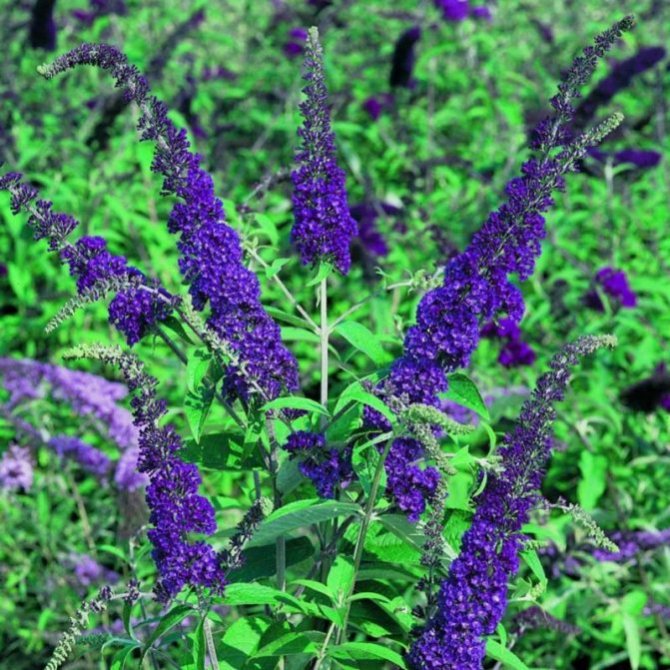

How to prepare a budlea bush for winter
The origin of budleia indicates that the frost resistance of this shrub is rather low, so the plant should be well prepared for winter. With the first frosts, budlea leaves begin to darken - this is a sure sign that you need to prepare for wintering.
The first thing to do is trim the plant short to avoid frostbite on the shoots. There are many ways to preserve your plant, but the best one is building “dry shelter«.
It is quite simple to make it: on a metal or wooden frame, you need to pull any waterproof material in 2 layers and make an interlayer between them using dry foliage.


The bottom of the shelter must be secured with something: bricks, heavy pieces of iron, so that the frame is not blown away by the wind. The shelter must be well ventilated; for this, several small holes can be made in the “roof” material. It is best to use roofing material as a shelter, and a wooden box as a frame.
Did you know? The larger the frame, the better your plant will cope with the winter.
Gardeners often recommend spilling the plant with humus or peat before winter, however, such hilling can be detrimental to the bush, since if there is a lot of snow, its roots will simply get wet.
Even if the tops of the budleya are a little frozen, you should not worry, they quickly recover. However, freezing from year to year will lead to the fact that budleya will live much less.
How to germinate from seeds
Budleia planting material collected from its bushes is not a way to germinate, unless preliminary stratification is carried out. So it is best to purchase a ready-made shift in the store to be sure that seedlings will appear.
Since budley seeds are small, it is better to combine them with sand. Sow them on loose soil with neutral pH in wide bowls with drainage holes and a layer of drainage under the ground.
It is not worth sowing the seeds deeply, just squeeze them lightly, and then sprinkle with water from a spray bottle. Cover with glass on top. Place the container in a warm place out of direct sunlight. it will also be interesting to know how verbena is sown with seeds.
The video shows how to germinate Budley from seeds:
Sowing is necessary at the beginning of March. And it will be possible to notice the first sprouts of budley in 2-3 weeks. Then the glass can be removed, and the soil can be watered from time to time with a solution of potassium permanganate. Thanks to him, you can protect the seedlings from the black leg.
When the seedlings get stronger and they have 2-3 leaves, then a dive has to be done. To do this, plant them in separate pots, in which they will be before they are to be landed in an open area. Subsequent care for them is reduced to maintaining an optimal temperature regime, normal illumination and moderate watering.
Growing budley in the garden
After planting the buddleya of David white, it is necessary to organize competent care for the young plant.
He needs timely watering, fertilization and pruning, it is recommended not to neglect the prevention of diseases and pests.
Pruning is necessary for the formation of a shrub: after the procedure, it looks more neat, and in the future it pleases with abundant flowering.
In spring, tall buddleys are cut off to 90 cm from the ground, and undersized varieties up to 30 cm. In the summer, fading inflorescences are cut off.
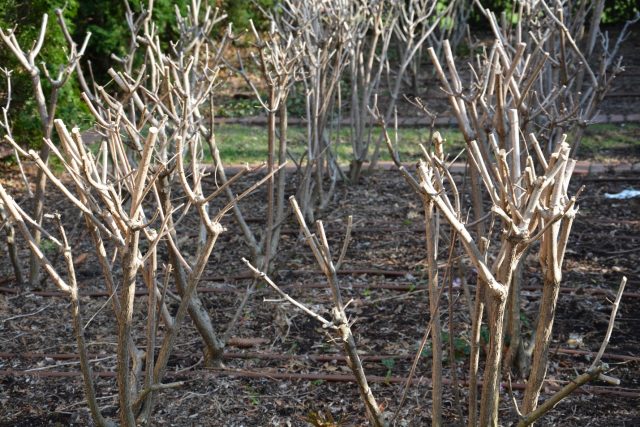

Important! As a preventive measure, the affected branches are removed from the whitefly and spider mites, and the buddley bush is sprayed with insecticidal preparations. The plant is distinguished by strong immunity to diseases, pests attack during periods of drought.
Watering schedule
It is recommended to moisturize young seedlings daily until the root system is strengthened. As the shrub develops, watering is reduced; adult plants are not watered. This is due to the fact that buddleya has very strong roots that can reach groundwater. Provides the necessary amount of moisture to the plant and precipitation.
During periods of drought, 10 liters of warm and settled water are poured under each shrub 1-2 times every 7 days.
Top dressing budley
Fertilizing the soil is required from 2 years of life of the shrub. The procedure is carried out twice a season: in May and July.
The following are used as fertilizers for buddley:
- additives containing minerals (20-25 g are dissolved in 10 liters of water);
- a mixture of mullein (1 liter of manure) and superphosphate (15-20 g): the finished fertilizer is diluted with water and applied to the soil;
- chicken droppings with the addition of potassium sulfate (15-20 g of the substance and 0.5 liters of droppings are mixed in a container).
Important! For young shrubs, the dosage of fertilizers is reduced by 2-3 times.
Do I need to mulch
It is not advisable to loosen the soil around the buddlea: there is a high risk of damage to the root system. To ensure the supply of oxygen to the plant, the soil is mulched. To do this, use the materials at hand: peat, humus or sand, fallen leaves.
When to transplant a budley to another place
Moving the shrub to another area is not recommended. Due to the strong root system, the buddleya does not tolerate a change of residence very well, therefore, as an alternative, a stalk is separated from it, which is transplanted to the desired place.
If it is necessary to transfer, the shrub is removed from the soil, preserving the integrity of the roots as much as possible, placed in a new hole, covered with earth and watered abundantly.
Important! The optimal time for the procedure for transplanting buddley varieties is spring, on a warm sunny day, in the late afternoon.
How does propagation by cuttings
After spring pruning has been done, cuttings that are 15-20 cm long can be used for propagation by cuttings. This breeding option allows you to directly get the variety you need.
For propagation by cuttings, you can use young shoots or already lignified ones. If you decide to use the second option, then you need to cut the branches in the fall. They are stored until spring in the cold. And with the onset of heat, plant cuttings 20 cm long into the soil.
If you use young cuttings obtained in spring, then first you have to remove the buds from them, and then process them with a growth stimulant. This will enhance root formation. The cuttings are planted to a depth of 3-5 cm under the film. When they take root, new shoots are formed. Then the film can be removed. Planting cuttings should take place in soil enriched with sand and peat. Rooting lasts for 2 months. But how the blue spruce is grown by cuttings will help to understand the information from the article.
Buddleya David: planting and care in the open field
There are two ways to grow buddleya: seeded and vegetative. Both have pros and cons, and the optimal reception in one case will be unacceptable in the other.
Reproduction of buddlei by seeds is possible only if we are not talking about a hybrid variety: the seeds of hybrids do not fully inherit the properties of the mother bush due to the basic principles of genetics: the law of uniformity of the first generation hybrids and the law of splitting.
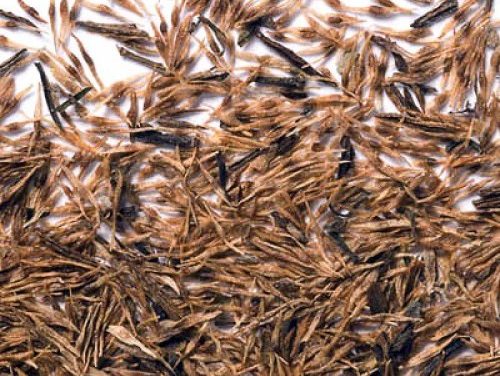

In addition, seeds in our climate will not have time to ripen, and the probability of getting plants from them, even if stratification is carried out, is not always great.
For your information. Gardeners of the middle lane have such experience, but the result is rarely pleasing: even if the shrub grows, it does not bloom too abundantly, and the clusters are small.
Sow buddlei seedlings in December.
When buying seeds, you need to pay attention to the conditions necessary for the plant: whether it lives well in our climate.
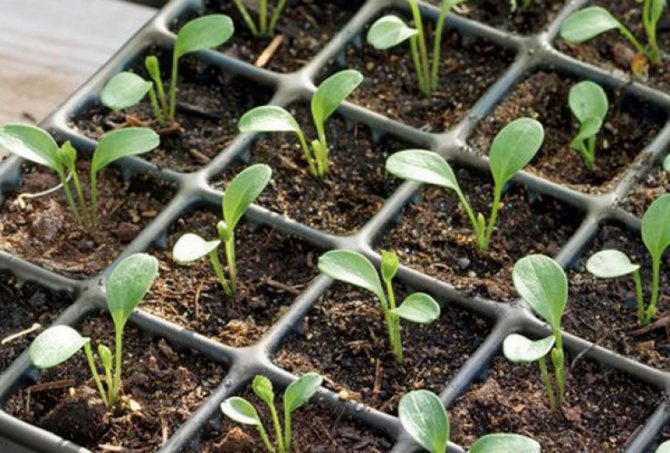

- All other things being equal, it is better to take granulated seeds: they are small from buddleia, which leads to difficulties when picking.
- In addition, the granulated seeds have already been treated with a germinating solution.
Landing algorithm
- Granulated seeds are sown 1-2 per 200 ml peat glass filled with wet peat mixture.
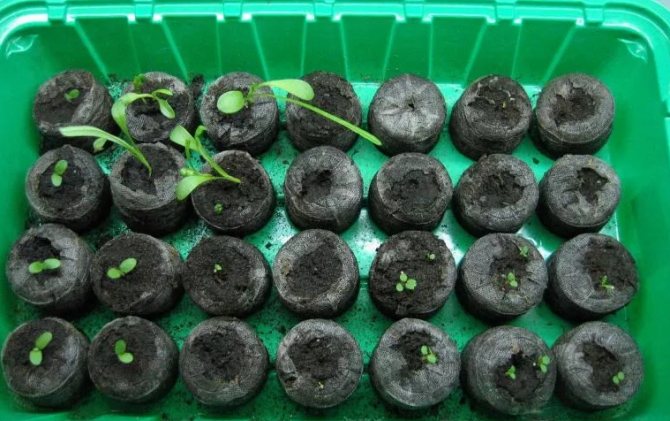

- Non-granulated ones are grown in a box and then dived, planting 1 plant in the same peat pot.
- The crops are covered with foil and placed in a warm, lighted place.
- The crops are watered every three days, after the emergence of shoots, the film is removed daily to prevent mold from forming.
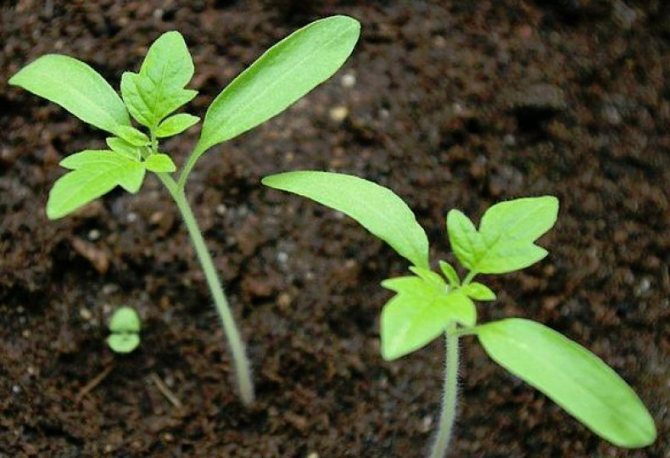

Budleia seedlings are transferred to the ground after they have grown and strengthened, and the probability of frost is negligible, that is, by the end of May - June, and in regions with a mild climate it is possible even earlier: in April.
Propagation by cuttings
Propagation by cuttings is much easier.
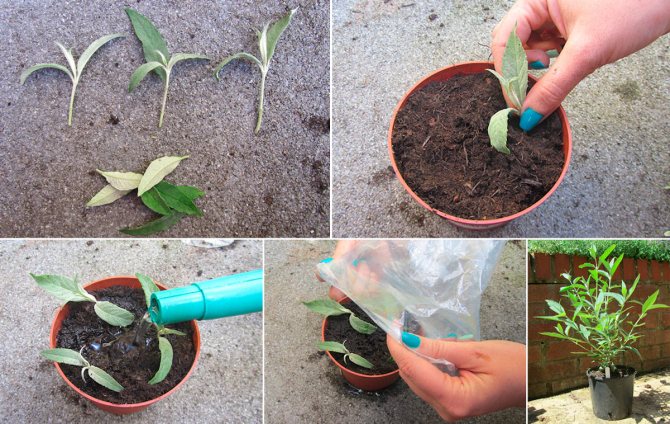

- In June or July, cuttings are cut from strong, strong shoots 30-40 cm long.
- Only the top and 1-2 leaves are left on top, the cut is kept for 2-3 hours in a root-forming liquid (you can use a potato, from which you need to remove all the eyes, and then place a cutting in it: this root crop has enough growth-stimulating substances), planted, watered and cover with foil.
- The film is kept until the stalk is sufficiently rooted, but during the day it is important not to overheat or burn the young plant, so the film is removed, or only the hole is covered, leaving the plant itself free.
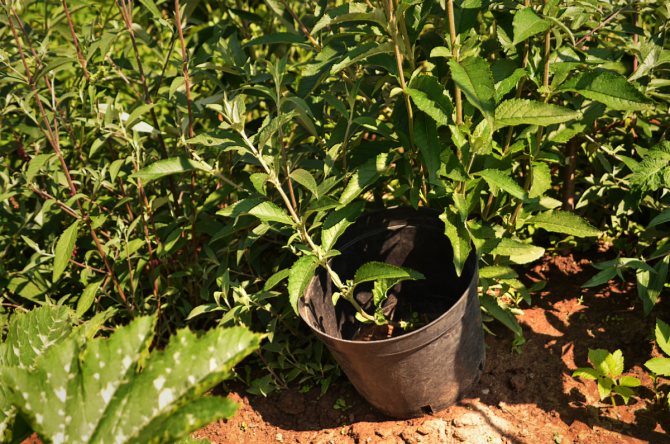

For your information. Budleys, obtained by cuttings, completely repeat all the properties of the mother bush.
In both cases, before the cold weather, you need to dig up a first-year seedling along with a lump of earth and take it to a cool place, but without pronounced negative temperatures.
Young seedlings do not tolerate the vagaries of the weather: not only frosts, but also regular wetting during thaws.
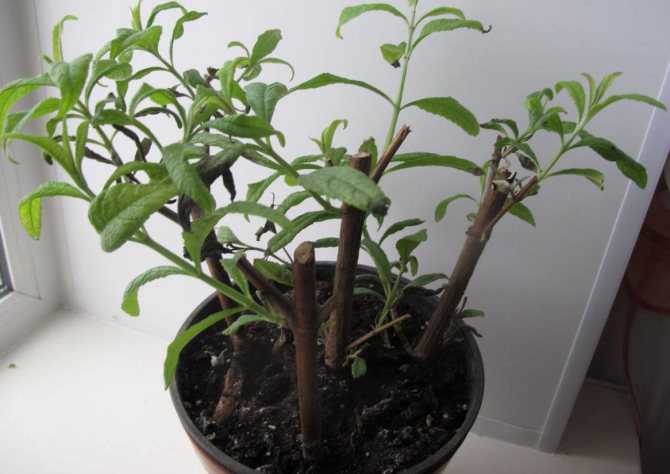

For your information. It is possible to leave the buddleya to winter in the ground only in the second year, and in regions with frosty or little snowy winters - even in the third year.
Planting buddlei, which has wintered indoors, back into the ground is possible in April or May.
Description
Deciduous shrub, family of scorchaceae. The plant is named after the biologist who found it. Homeland is the tropics, so the buddleya prefers warmth.
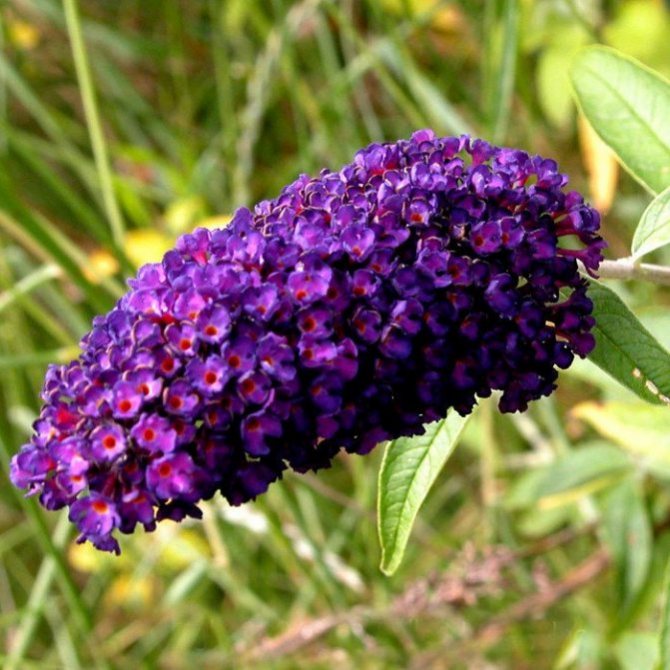

Bloom
From mid-summer to early fall. Very lush with proper care.
Flowers
Collected in clusters up to 45 cm long, of various shades, they have a pleasant aroma that attracts bees and butterflies. Because of this feature, it has another name "moth tree".
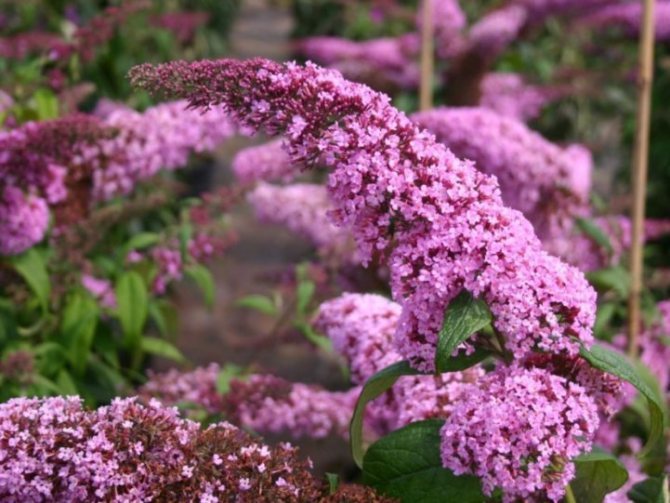

Trunk
Shrub buddlei branched, with drooping shoots. Up to 3 m in height.
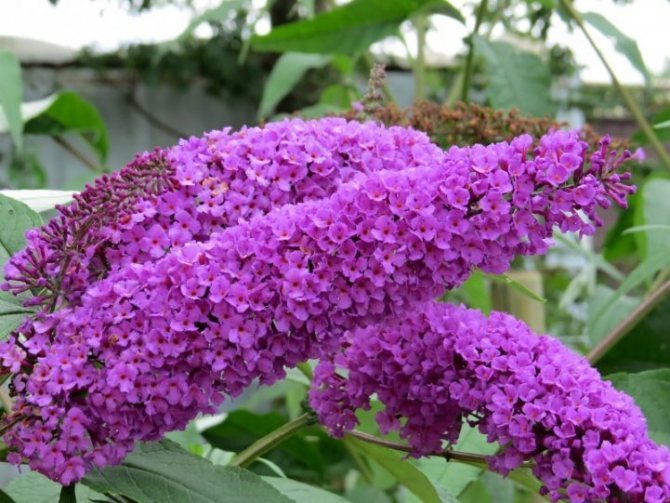

Roots
They are not located deeply, they grow close to the surface.
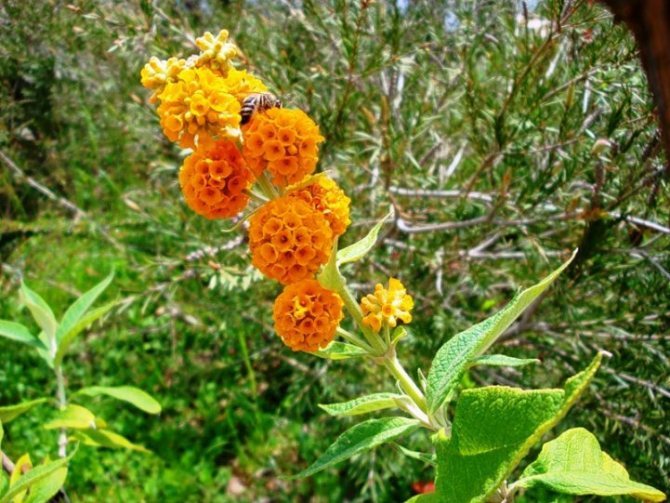

Decorative features of buddleya
Florists appreciate the plant for its long flowering. Popular name for perennial butterfly flower. Butterflies and bees flock to his aroma. The bushes are very beautiful, so they are planted in gardens.
Inflorescences, consisting of small flowers, are large, up to 20-30 cm long. The color of the baskets is different, depending on the variety, type:
- lilac;
- white;
- purple;
- lilac;
- pink;
- blue.
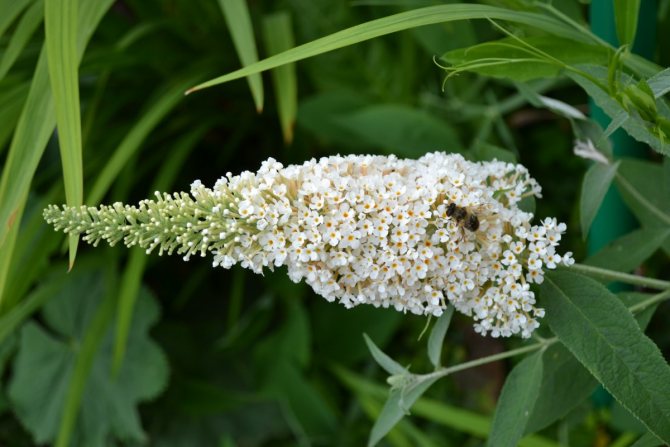

Comment!
Blooming shoots are cut off, placed in flowerpots. They decorate terraces and verandas with them.
The buddleya blooms for a long time. The period depends on the variety. The general terms for all species, hybrids are July-October. This feature is used by landscape designers and amateur gardeners. Late blooming perennial decorates the garden until frost.
How to care
Budlea is a heat-loving shrub, so it needs to be insulated for the winter. Also, it is not worth replanting the plant often, since it is real stress for him.
Pruning
It is imperative to trim the shrubbery in autumn or early spring. Only then can you get a beautiful flowering bush. In addition, inflorescences actively develop only on young shoots. For a budlea planted in the first year, it is necessary to cut the main healthy branches in half in March. But remove old and brittle ones completely, as they will slow down the growth of healthy shoots. It will also be interesting to see how to prune an orchid after flowering.
In the video - How to take care of Budley:
Shrub trimming is carried out as follows:
- Remove all brittle and any branches, and shorten the main ones by 1/2.
- Further, every spring it is necessary to make the branches shorter by ¾. Remove old shoots completely. If you do not prune, the plant will lose its shape.
- Inflorescences that have already bloomed must be removed. Then, by the end of summer, new ones are formed.
Top dressing
Budleia requires fertilization after winter. This will allow its root system to recover and young shoots to grow actively.
This requires the use of nitrogen fertilizers. The second top dressing should be performed in the summer, after the beginning of flowering. Thanks to potassium and phosphorus, the growth and flowering of the crop is accelerated. You can also feed crops with organic fertilizers.
Disease and pest resistance of buddleya
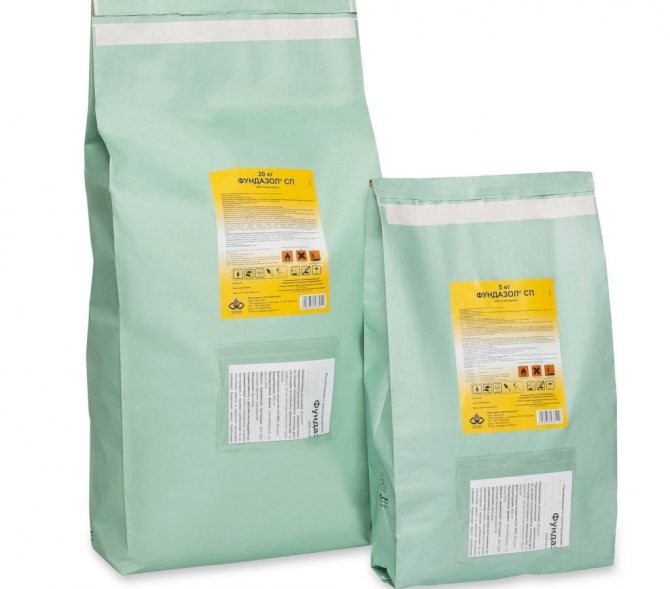

You may be interested in: Low-growing flowers for a flower bed, blooming all summer: description, names and photos Monsters: growing, care and reproduction at home Passionflower: species and varieties with a description, growing and care at home
The shrub must be protected from pests and diseases. Bad weather, illiterate care are the causes of gray rot.Weeping gray spots on the leaves indicate its appearance. They quickly grow in size and darken.
They do not postpone the treatment of buddleya The branches infected with the fungus are cut out, destroyed. Healthy shoots are sprayed with a fungicide solution, effective:
- Azocene;
- Fundazol.
The leaves of the buddleya curl and wither, which means that the whitefly (white death) laid eggs on the plant, the larvae that hatched from them feed on the sap of the plant. To save the plant from parasites, urgent measures are taken:
- rinse the crown with water from a hose;
- sprayed with insecticide.
Reference!
Permitin, Aktara - preparations for whitefly.
A brown web appears on an ornamental shrub if it is attacked by a spider mite. The plant dries up, leaves fall off, it loses its beauty, it can get sick with a fungal disease. Destroy parasites with the drug Thiofos.
Care, basic requirements
In order for the buddleya of David to please with its lush flowering, she needs care.
Basic preferences:
- adequate lighting;
- lime soil;
- regular watering, loosening the land and weed control;
- fertilization;
- shelter for the winter.
Planting any plant, including buddleya, begins with choosing a place. For the cultivation to be successful, immediately plant it in the sun. Even if you provide good care, drafts, wind, and transplants can kill the buddley.
The plant prefers a calcareous soil, it needs good drainage. Feel free to feed it with nitrogenous fertilizers, first in spring, then in July. Choose fertilizers with a high content of potassium and phosphorus, in addition, it needs organic matter.
As with other plants, excess moisture can be dangerous for it, but the soil underneath it should always be moist. Strive to create for her the same conditions in which she grows at home - that is, conditions of a humid tropical climate. In the summer heat, it would be good to spray the bush, starting from the crown.
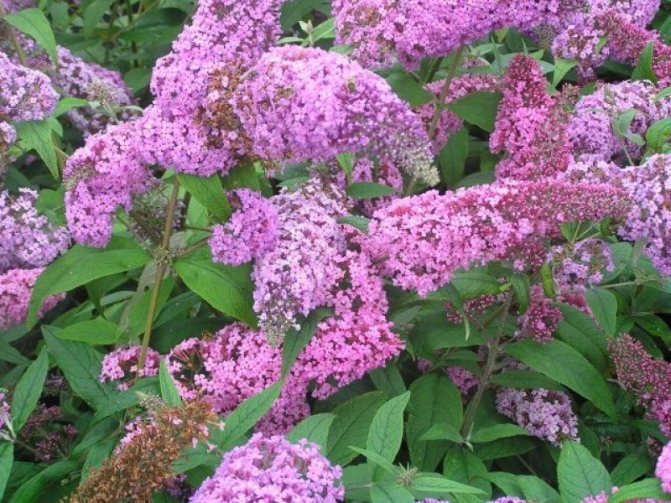

Proper maintenance includes regular pruning. Such a plant will grow and bloom well. In the first year, the plant is cut in the spring, leaving only large stems, in the second, young shoots are cut to the second bud, and the old ones are simply shortened a little. In subsequent years, they are engaged in the formation of the crown and the removal of excess growths.
Buddleya is ubiquitous, as she is afraid of frost, care consists in her shelter. First, the bush is cut off, then a wooden structure is put on and covered with a film, peat, dry leaves. If the branches froze over the winter, do not let this scare you, with the arrival of heat, the crown will quickly recover.
Note for beginners:
- Using seeds for planting may not get the result you expect, be prepared for it. To avoid unpleasant surprises, use cuttings for propagation.
- Caring for cuttings before planting is very simple. They are stored in a cool, dark place and planted in the spring.
- Buddleya can grow in a regular flower pot. Caring for such a plant is no different from caring for growing outdoors.
- The bush grows quickly, so the optimal planting distance is two meters.
The description and cultivation of varieties does not have significant differences, they differ in height, color of inflorescences, although there are quite frost-resistant ones, which do not need to be covered in the garden for the winter, for example, the Black Knight variety.
Take care of the shrub correctly, and it will thank you with its fabulous bloom.


